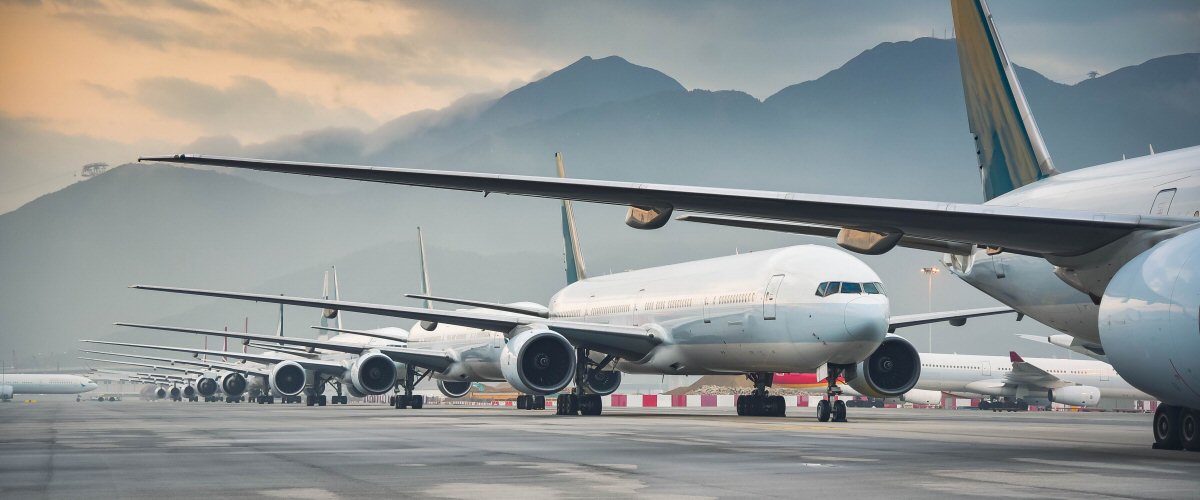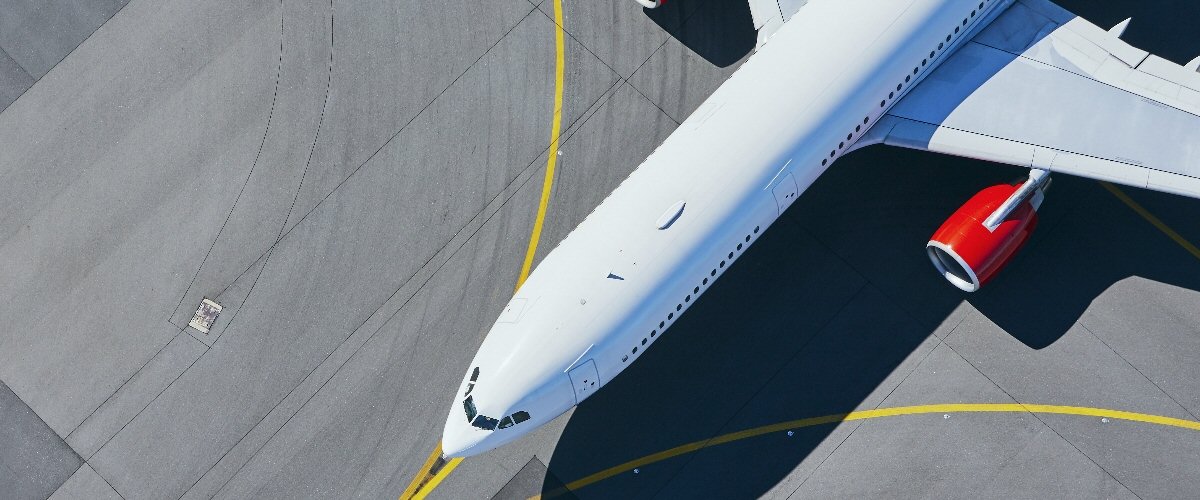Edition 11 | 14th June 2024 Download PDF
.png)
Following another disappointing delivery month for Boeing, I have taken the opportunity to re-evaluate the full-year delivery expectations we anticipate from both major OEMs.
So far this year, Boeing has delivered only ~62% of the 737s that they had delivered by the end of May 2023. Whereas they were producing ~32.6 737s/month last year by the end of May, so far it has barely made it over 20 in 2024. Even if I assumed that they manage to recover to a decent monthly average for the remainder of the year matching that for the first half of 2023, they will only manage to produce 330 units. That is around 30% lower than expectations we had back in December last year. It could well be worse if the current rate is maintained for longer. Whilst we have seen sustained delivery rates well into the mid-50s for the 737, the current situation dictates that any serious ramp-up is out of the question until the assessment of the situation is complete. Coupled with the fact that we also expect the 787 deliveries to drop from our initial expectation by a similar percentage, the total commercial aircraft output from Boeing looks to be at least 15% down overall by year-end.
At Airbus, the situation is of course, markedly better. The A220 is ahead of the May 2023 numbers (21 v 19), the A320neo is marginally ahead by 1 (215 v 214), the A330neo is at the same level (10), whilst the A350 is clear by 3 (17 v 14). That being said, I also had to trim the overall expectation for Airbus slightly based on expected ramp-ups and the August lull. Once I take both OEMs into full account, the Airbus rise is countered by the Boeing slump and sadly that would mean that the overall combined output closely matches that of last year, with the added problem that we expect fewer 777Fs to deliver as well. Based on our assumptions of future ramp-up scenarios, it would mean that we won’t reach growth levels beyond 2018 until the end of 2026 and full ramp-up until early 2028!
Off the back of that, I have also slightly trimmed our expectations for new orders placed this year, although more on that in a few weeks when I release our Farnborough Air Show forecast. The table below illustrates our latest full-year 2024 delivery forecast and the starting point as released back in December 2023.
|
|
Jan-24 |
Jun-24 |
|
A220 |
72 |
76 |
|
A320 |
642 |
620 |
|
A330 |
36 |
30 |
|
A350 |
72 |
74 |
|
737 |
480 |
330 |
|
777F |
26 |
20 |
|
787 |
96 |
60 |
|
767F |
14 |
14 |
Source: IBA Insight and Intelligence

Source: IBA Insight
It is not too often that Africa is at the forefront of global aviation news. Representing 17% of the global population but only 4% of operators’ fleets, it is significantly underdeveloped. Unfortunately, the region’s industry reputation is stained by government and economic instability, which deters much investment. However, more often than not, it is not actually the airline’s fault!
Such an example is the Nigerian government releasing the $850m in held-up revenue of foreign airlines this month. With airlines such as Emirates now declaring that they will reestablish routes into the country, it prompts the question of whether African aviation is reforming.
Nigeria had been the worst offender globally (the payment reduced the global amount by 28%), with their held-up funds now down to $19m. Unfortunately for the airlines, they do not have control over this, and it is the government protecting their currency that causes these moves. If the ‘balance of payments’ is too one-sided with people wishing to sell the Nigerian Naira, it will depreciate. Ironically this is the opposite phenomenon of the ‘Dutch Disease’ that plagued their economy for decades prior, in which a resource export-dominated economy (oil) pulls up the currency and smothers other industries. However, the new Nigerian president Bola Ahmed Tinubu is willing to risk the currency to open the economy.
With the move, international airlines will feel more confident repatriating revenues from the country and likely put in more routes, boosting the economy. Likewise, and arguably more importantly, there should be more foreign direct investment in aviation. Most ‘successful’ African airlines are full-service carriers, supported/owned by their government. There are remarkably fewer low-cost airlines on the continent, despite their model having great success in developing markets, where consumers fall into their pricing sooner. The challenge here is that the low-cost model better suits short-haul, and freedoms of the air between African states are still tremendously restrictive. It needs to be a group effort!
In terms of funding and investment, there is also the question of cost. One of the repeating conversation points from IBA’s attendance at the recent Africa Aviation Summit in Johannesburg was the difficulty in getting funding. Global airline funding has reportedly dropped from around $300bn in 2019 to a third of that figure in 2023. Airlines being cash-rich will play a part, but also the base rates being elevated globally have made costs prohibitive for many. This is especially the case for many African carriers with poor financial track records, and therefore high credit premiums. IATA forecast a return on equity of 5.7% for 2024, but a Weighted Average Cost of Capital (WACC) of 9.0%.
Fortunately, in this funding environment, we have seen countries investing in their own airlines. In this week alone, Royal Air Maroc received $354m from their government, whilst EgyptAir received $421m from theirs. If Nigeria opening up their industry has the positive outcome IBA predicts, the other African nations involved may also release their blocked funds, boosting the region. If a carrier can then facilitate cooperation between neighbouring aviation authorities, there is tremendous upside.
More insights and analysis on this region can be found in IBA’s African Market Update Report for 2024, available to purchase on request.

ESG Analyst
Formula E, the lesser-known counterpart to Formula 1 for electric cars, has achieved a groundbreaking milestone in utilising Sustainable Aviation Fuel (SAF) for air transport. For Round 12 of the sport’s championship season, teams and championship equipment were transported from Berlin to Shanghai using DHL's GoGreen Plus service, which is designed to help businesses reduce the carbon emissions associated with their shipments.
As businesses increasingly need to report their Scope 3 emissions, a commitment many have already undertaken, IBA urges more sports-related organisations to follow Formula E's example. Additionally, while these organisations are making progress in environmental consciousness, they should encourage fans attending events to
consider eco-friendly transportation options.
Given that Formula E successfully reduced freight emissions by 73% using SAF in 2023, IBA is keen to see the emission reductions achieved this year.
Want more aviation ESG news from the last month?
Our regular update looks at the key trends and market indicators using data and analytics provided by IBA Insight.
 Recovery by World Region.png)




凭借由获奖 ISTAT 认证评估师组成的庞大团队以及 30 多年累积的专有数据,IBA 在全球估值市场上处于领先地位。我们为全球范围内的一系列资产类型提供独立、公正的价值意见和建议,包括飞机、发动机、直升机、货机/航空货运、降落机位和预备件等。IBA 始终致力于超越客户的期望,我们的客观意见为贷款、资产收回、商业开发和再营销提供了必要的安全保障。

IBA 与全球领先的飞机和发动机租赁公司精诚合作。我们的专业建议植根于深厚的行业知识,因此 IBA 可以在投资周期的各个阶段提供支持,让客户放心无忧。从估值、机队选择、投资组合开发,到租赁结束时的退租和再营销,我们将全程协助客户完成整个租赁期的所有风险评估和资产管理活动。

航空投资往往错综复杂,会涉及大量财务风险,因此,放任资产不去管理绝对是下下策。无论是首次投资的新手,还是市场上驾轻就熟的资深投资者,IBA 都能帮助您克服各种资产类型的复杂性,让您更好地了解各种投资机会。我们可以与您携手合作,支持您的投资组合开发、多元化发展并满足您的战略需求。

30 多年来,IBA 与全球和地区航空公司紧密合作,提供估值和咨询服务、航空数据情报以及飞机和发动机的退租支持。我们在遍布世界各地的各种航空项目上与客户展开协作,满足他们的额外资源需求,随时随地提供所需的项目管理支持。

我们掌握着丰富资源并善于出谋划策,可为客户提供诉讼支持和纠纷调解办法,并根据客户的法律策略量身定制周密的解决方案。正是由于 30 多年来专有航空数据的积累、定期参与战略并购,以及丰富的飞机管理专业知识,我们能够经常接触到各方之间的典型争端领域。IBA 通过直接或与客户自己的法律团队合作的方式,在各个方面为客户提供帮助,从飞机损坏或损失的保险相关理赔,到常常在退租时发生的租赁商与承租商的纠纷。